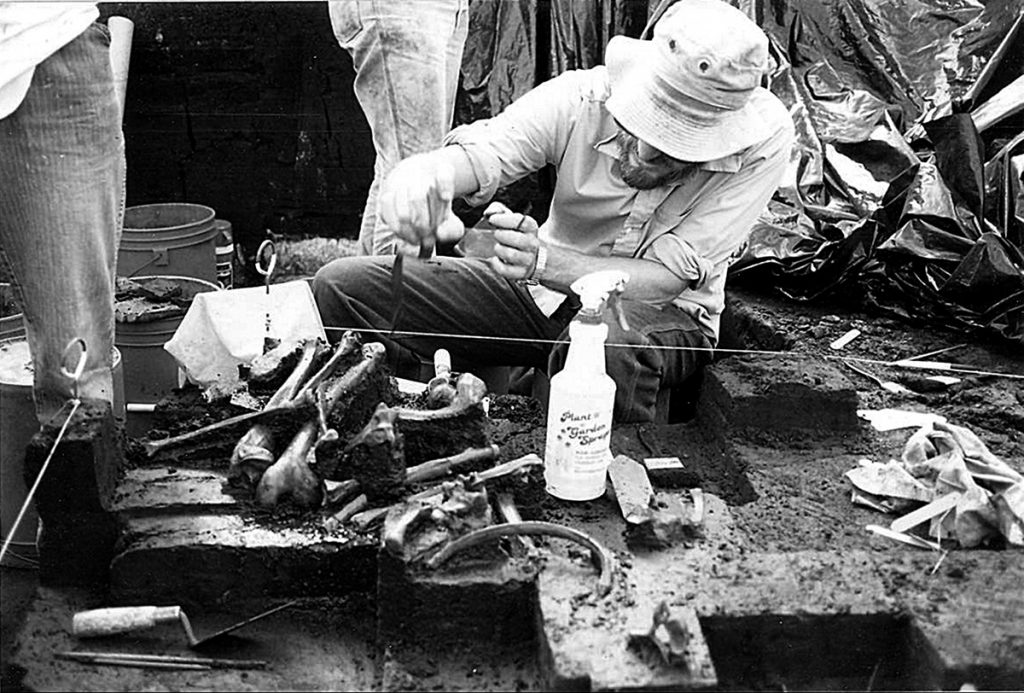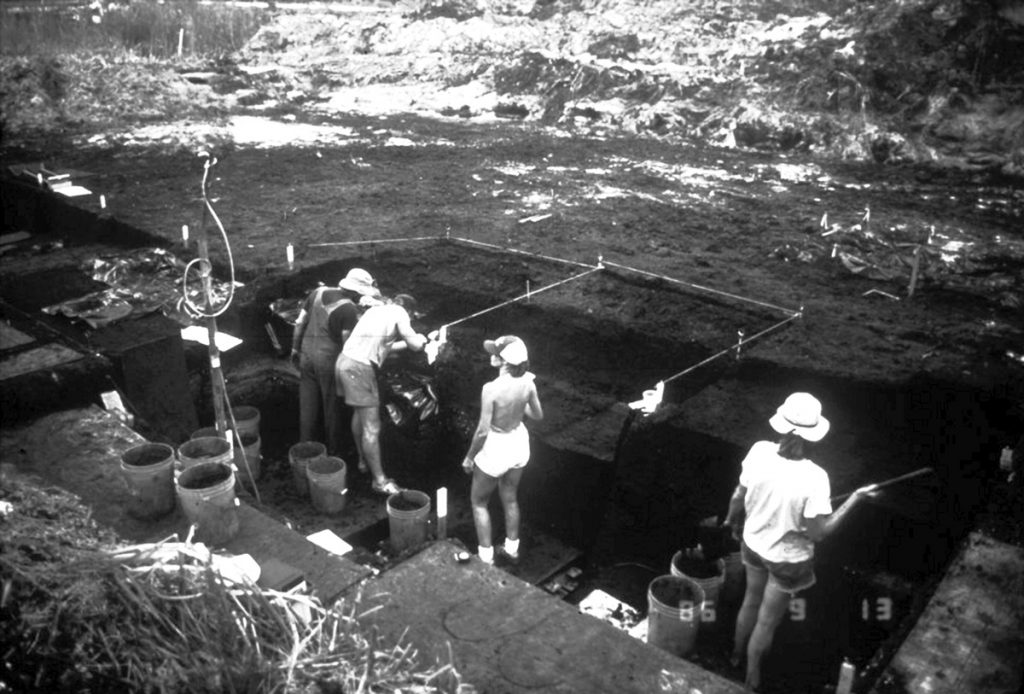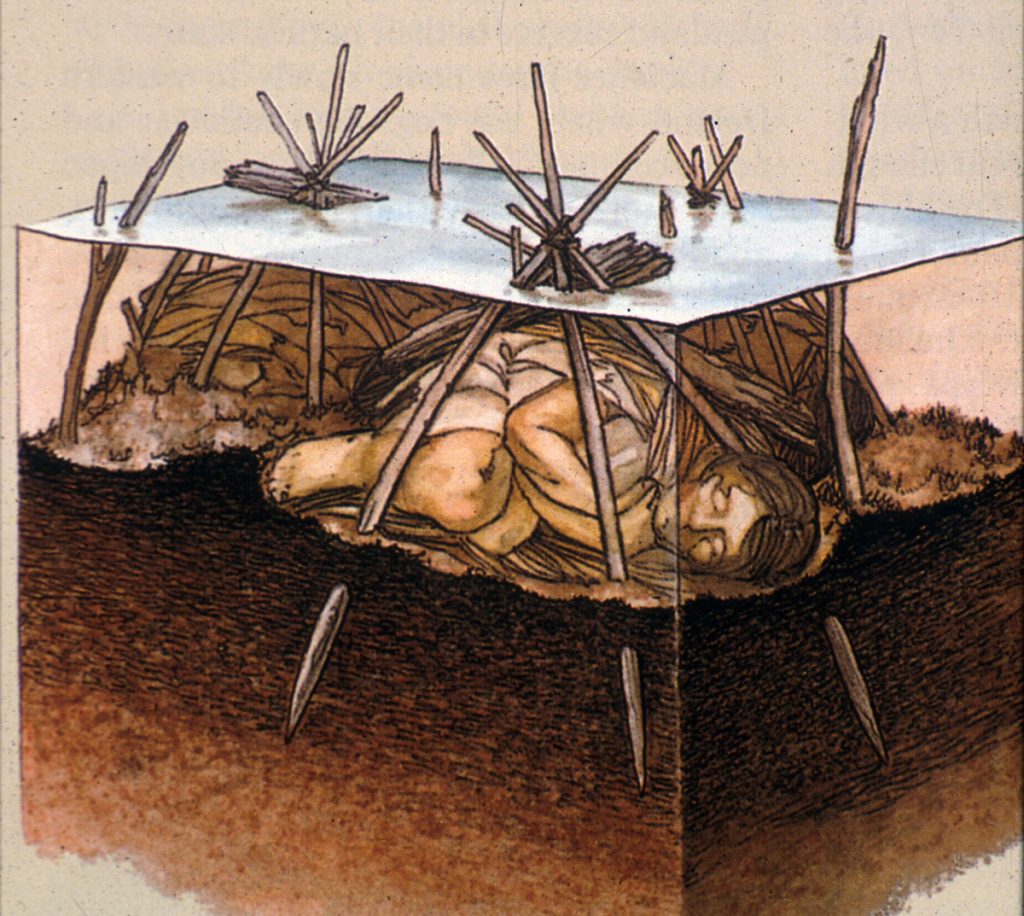The discovery of Windover, a prehistoric cemetery hidden beneath an ancient pond in Florida, has unveiled remarkable insights into early human history. This significant archaeological site has provided an extraordinary glimpse into the lives, rituals, and health of a community that thrived over 7,000 years ago.
The Windover site was discovered in 1982 when a backhoe operator working on a new housing development stumbled upon human remains in a peat pond. What began as a routine construction project quickly transformed into one of the most important archaeological finds in North America. The peat, which preserves organic material exceptionally well, protected an ancient cemetery, providing a unique window into the past.
The cemetery contained the remains of 168 individuals, buried in the peat pond in a manner that indicated complex burial practices. The bodies were laid to rest in the fetal position, wrapped in woven fabric, and accompanied by various grave goods. This level of care suggests that the Windover people had established social and cultural rituals surrounding death, reflecting their beliefs and societal structures.
One of the most astonishing aspects of the Windover discovery is the preservation of brain tissue in nearly half of the skulls. This rare find has allowed scientists to conduct extensive research on prehistoric health and diseases. Analysis of the brain tissue, along with other remains, has provided valuable information about the diet, diseases, and overall health of the Windover community. For example, evidence of anemia, arthritis, and other ailments has been found, offering insights into the challenges faced by these early humans.
The artifacts discovered at Windover further illuminate the daily lives and skills of this prehistoric community. Items such as bone tools, projectile points, and woven fabrics reveal their craftsmanship and adaptability. The presence of these items also suggests a well-established trade network, as some materials originated from distant regions. This indicates that the Windover people engaged in extensive interaction and exchange with neighboring groups.
The discovery of various plant remains and seeds at the site has shed light on the diet and environment of the Windover community. These remains suggest a diet that included wild plants, fruits, and possibly cultivated crops, highlighting their understanding and utilization of the natural resources around them. This knowledge of their diet provides a broader understanding of their lifestyle and survival strategies.
Windover has also contributed significantly to the study of prehistoric genetic diversity. DNA analysis of the remains has revealed genetic links to modern Native American populations, providing a clearer picture of the ancestry and migration patterns of early inhabitants of the Americas. This genetic connection underscores the importance of Windover in understanding the broader human story.
In conclusion, the unearthing of the Windover cemetery has offered profound insights into a prehistoric community’s life, health, and cultural practices. This ancient pond has preserved more than just human remains; it has safeguarded the stories and secrets of a people who lived thousands of years ago. As research continues, Windover will undoubtedly continue to enrich our understanding of prehistoric human life and the intricate web of interactions that shaped their existence. This remarkable discovery stands as a testament to the enduring legacy of the Windover people and the invaluable knowledge hidden beneath the earth’s surface.









